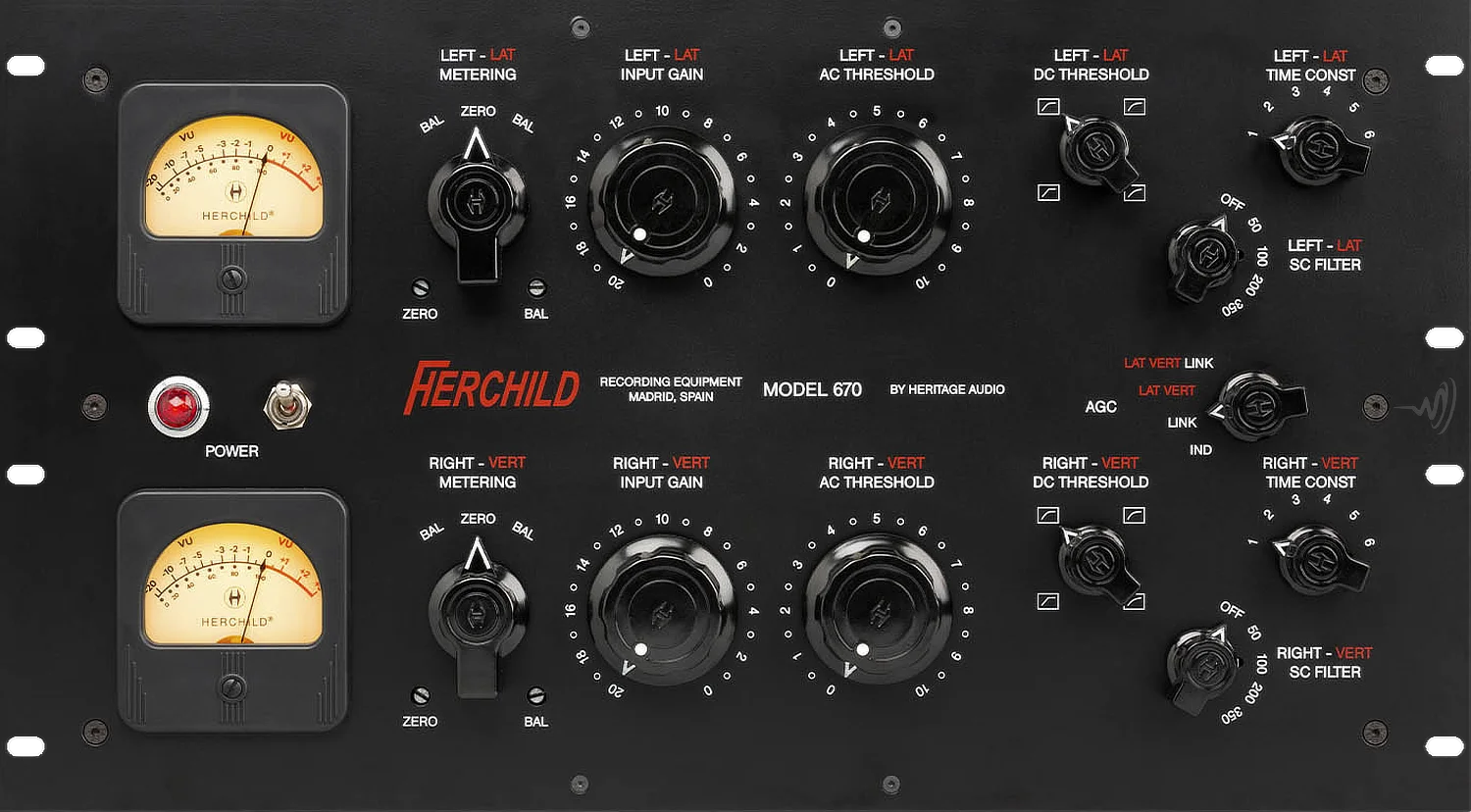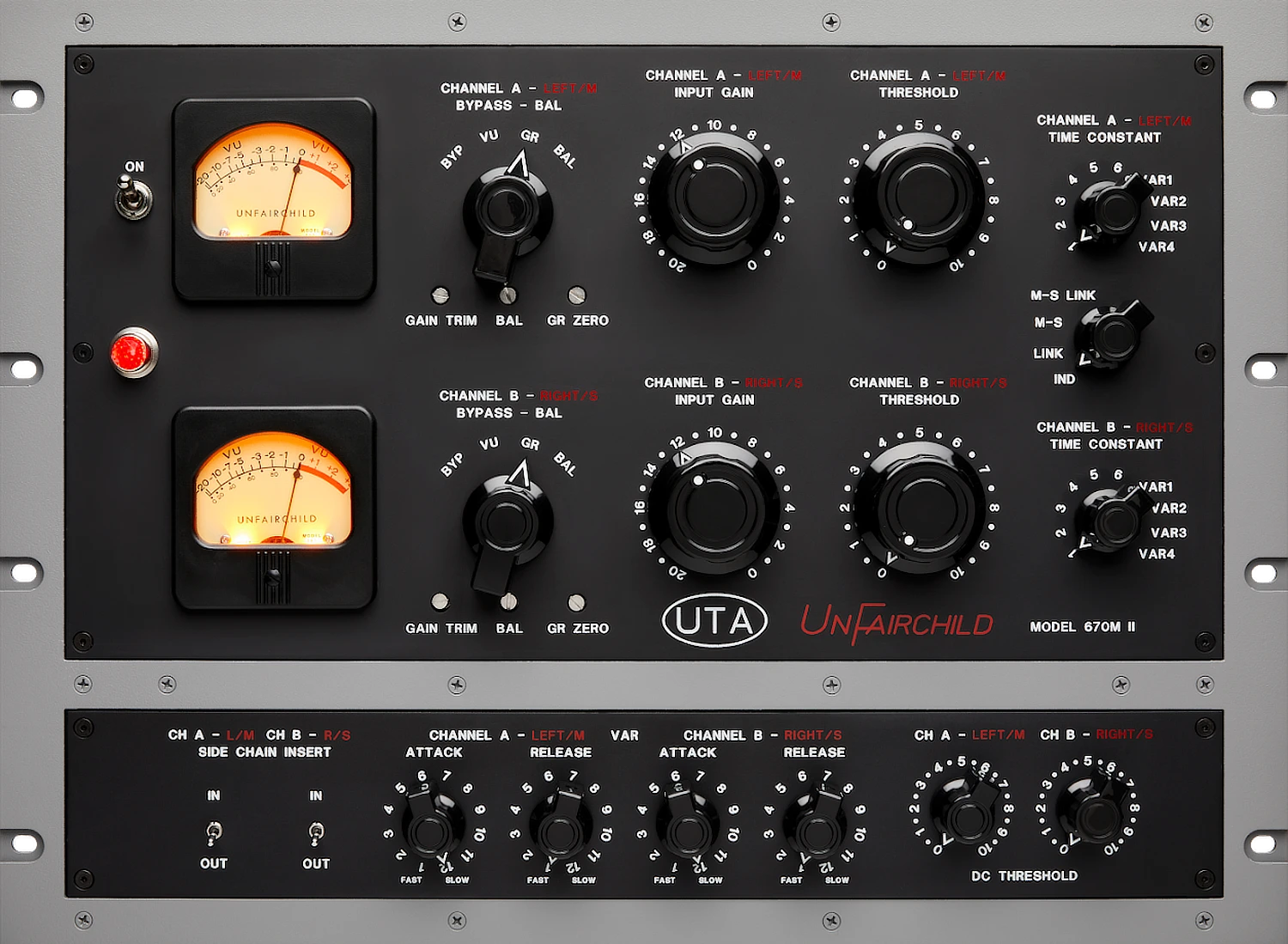The Fairchild 670 is widely regarded as one of the most legendary and sought-after vintage compressors of all time. Its unique sound, versatility, and build quality have made it a favourite among engineers, producers, and musicians for over half a century.
The history of the Fairchild 670 begins in the late 1940s, when Sherman Fairchild founded his company, Fairchild Recording Equipment Corporation, in New York City. Fairchild had a background in engineering and technology, and he saw an opportunity to apply his skills to the rapidly growing field of professional audio equipment.
Fairchild’s first major success came with the development of the Fairchild 660, a variable-mu tube compressor designed for broadcast and recording applications. The 660 quickly became popular among engineers and was used on countless recordings throughout the 1950s and 1960s.
In the late 1950s, Fairchild set out to develop an even more advanced compressor, one that would offer greater control, precision, and sonic character. The result was the Fairchild 670, which was introduced in 1960.
The 670 was a technological marvel for its time, featuring two channels of compression, each with its own set of controls, as well as a number of innovative features. The heart of the 670 was its use of eight tubes in each channel, including four 6BC8 and four 6386 tubes, which allowed for greater headroom, lower distortion, and a smoother sound.
The 670 also featured a number of advanced control options, including variable attack and release times, sidechain filtering, and variable input and output levels. These features allowed engineers to achieve a wide range of compression effects, from subtle gain reduction to extreme pumping and breathing.
The Fairchild 670 quickly became the compressor of choice for many of the top recording studios and producers of the era, including Phil Spector, Brian Wilson, and George Martin. Its unique sound and character became an essential part of many classic recordings, including the Beatles’ “Sgt. Pepper’s Lonely Hearts Club Band” and Pink Floyd’s “Dark Side of the Moon.”
Despite its popularity, the Fairchild 670 was not without its drawbacks. It was expensive, difficult to maintain, and required a skilled engineer to operate effectively. As a result, production of the 670 was limited to only a few hundred units, and the compressor became increasingly rare and sought-after over time.
Today, the Fairchild 670 is considered a holy grail among vintage compressors, with units selling for tens of thousands of dollars on the used market. Its unique sound and character continue to influence modern recording techniques and inspire a new generation of engineers and musicians.
The Fairchild 670 is a complex unit, utilising 20 tubes, 11 transformers, and 2 inductors. It is housed in a 14-rack space unit and weighs nearly 30kg!
Fairchild 660/670 Brochure Text
If you examine any monophonic or stereo record or tape available today, from any major label throughout the world, it undoubtedly uses a Fairchild Limiter in its production somewhere along the line. More and more companies throughout the world specify and use the Fairchild limiters, Model 660 or 670, for the following reasons:
- Complete absence of audible thumps normally associated with other limiter designs and a complete absence of distortion or noise usually associated with conventional limiters.
- Extremely fast attack time – the Fairchild 660 or 670 can produce full limiting in the first 5,000th of a second.
- Variable release time. The Fairchild 660 or 670 allows a variable release from 0.3 to 25 seconds, conveniently adjustable on the front panel with a 6-position switch.
- Can be used as a limiter or a compressor depending on program material and personal preference.
- Reliability and stability.
- Two models available: single-channel Model 660 or the unique stereo Model 670.
The Fairchild Limiter is available in two versions – the monophonic single-channel unit, the Model 660, and the unique stereo version, the Model 670. The following basic design points apply to both.
The basic design uses a single push-pull stage of amplification with an extremely high control voltage. The result: the unit never produces any audible or observable thumps and, unlike other conventionally designed limiters, the unit has extremely low distortion and noise under all conditions, either as a limiter or as a straight-through amplifier.
The fast attack time catches short transients that can, in other limiters, engage the limiting effect. The release time of 0.3 to 25 seconds provides real flexibility. Three positions (six are available) make the release time a function of program material, with fast recovery for short transient peaks and overall reduction of program level should the program level remain high.
Ample and accessible input controls, threshold controls, attack, and release time and metering controls.
The unit can be used as a limiter or compressor, depending on personal taste and program material. A 2 to 1 ratio as a compressor with a threshold 5 dB below average level, and a peak limiter with a 30 to 1 ratio with a threshold 10 dB above normal program level. The unit can also be adjusted to operate anywhere between these two extremes.
Reliability and stability: all components operate well below their rated maximums, ensuring trouble-free performance and day-in, day-out reliability. Masters made one day can be duplicated months later with the same control settings.
Two models are available: the single-channel monophonic version, Model 660, or the versatile two-channel stereo version, Model 670.
In addition, the Model 670 is designed specifically for stereo level control problems. The 670 on one chassis incorporates four independent limiters that will act on left and right channels or which will act on the lateral and vertical (sum and difference) components of the two stereo channels. This latter function is achieved by first splitting the two stereo channels through a matrixing network and then dividing them into their respective lateral and vertical components, limiting these lateral and vertical components, and then recombining through a second matrixing network into left and right channels again.
Using this Fairchild matrix limiter design, thousands upon thousands of stereo masters have been cut with maximum usable level and efficient use of available groove space, resulting in high-level recordings with long playing times. This Limit-Matrix system of the 670 now finds the same importance in the new era of stereo broadcasting. No wonder that the Fairchild limiters are used by the major labels and major recording services and quality-conscious radio stations throughout the world.

















